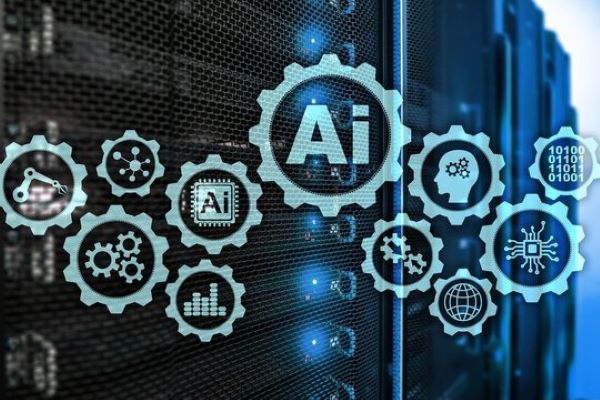|
Artificial Intelligence (AI) and Machine Learning (ML) are revolutionising enterprises, unlocking new levels of efficiency, automation, and data-driven decision-making. Yet, the real challenge isn’t just in deploying AI, it’s in integrating it seamlessly into Enterprise Architecture (EA) to ensure strategic alignment, operational scalability, and long-term sustainability. Without a structured approach, AI initiatives risk becoming isolated experiments rather than transformational forces. To fully harness AI/ML’s potential, organisations must embed these technologies within a Well-Architected EA framework, ensuring they support business objectives while maintaining governance, compliance, and interoperability. Whether deployed on-premises or in the cloud, a well-structured AI/ML strategy enables enterprises to build scalable, secure, and high-performing AI workloads, driving continuous innovation and competitive advantage. Understanding AI/ML in the Context of Enterprise ArchitectureEnterprise Architecture provides a structured approach to managing technology assets, business processes, and information flows within an organisation. AI/ML introduces a new paradigm, where systems learn and adapt over time, moving beyond static decision-making models. Unlike traditional IT systems, AI/ML operates on dynamic datasets, continuously refining its predictions and decisions. For AI/ML to function effectively within an enterprise, several key components must be considered. Data pipelines serve as the backbone, ensuring seamless ingestion, transformation, and storage of data. Compute resources, whether cloud-based, on-premises, or hybrid, provide the necessary infrastructure for training and deploying models. The adoption of MLOps enables continuous integration and deployment of AI/ML models, ensuring they remain relevant and effective. Finally, AI/ML must be integrated with enterprise applications through well-defined APIs, enabling real-time decision-making across business functions. AI/ML and the 'Well-Architected' ML LifecycleAs organisations increasingly move AI/ML workloads to scalable environments, a structured approach to designing and assessing ML workloads is essential. The Well-Architected ML Lifecycle outlines the end-to-end process of AI/ML integration, ensuring fairness, accuracy, security, and efficiency. Business Goal Identification The first step in AI/ML adoption is identifying the business problem that AI is intended to solve. Enterprises must define clear objectives, involve key stakeholders, and assess data availability to ensure feasibility. Whether addressing fraud detection, personalised recommendations, or operational optimization, aligning AI initiatives with business goals is critical to success. ML Problem Framing Once the business need is identified, it must be translated into a well-defined ML problem. This involves determining the key inputs and expected outputs, selecting appropriate performance metrics (e.g., accuracy, precision, recall), and evaluating whether AI/ML is the right approach. In some cases, traditional rule-based systems may be more effective, avoiding unnecessary complexity. Data Processing and Feature Engineering Data is the foundation of AI/ML success, and its quality determines model performance. The Well-Architected Framework emphasises rigorous data preprocessing, including cleaning, partitioning, handling missing values, and bias mitigation. Feature engineering plays a crucial role in optimising model accuracy, transforming raw data into meaningful attributes that enhance predictive capabilities. Model Development and Training AI/ML model training involves selecting the right algorithms, tuning hyperparameters, and iterating on performance improvements. Managed ML platforms provide scalable environments for training models, enabling enterprises to experiment efficiently. Evaluation using test data ensures that models generalise well and can adapt to real-world conditions. Deployment and Continuous Integration (CI/CD/CT) Deploying AI/ML models into production requires a reliable and scalable infrastructure. Scalable compute environments, both cloud-based and on-premises, optimise inference and training performance. Deployment strategies such as blue/green or canary releases ensure smooth transitions between model versions, minimising operational risk. Continuous Integration, Delivery, and Training (CI/CD/CT) pipelines further enhance efficiency by automating deployment and retraining processes. Monitoring and Model Lifecycle Management AI/ML models require continuous monitoring to detect drift in data patterns and model performance. Monitoring tools track model behavior, trigger alerts for anomalies, and initiate retraining processes when needed. Explainability tools further ensure transparency, allowing organisations to understand and trust AI decisions. AI/ML Architectural Framework within Enterprise ArchitectureIntegrating AI/ML into EA requires a structured approach, aligning AI capabilities with existing enterprise layers. Data Architecture Data is central to AI/ML success, necessitating a well-defined architecture for storage, processing, and governance. Cloud-based solutions rely on distributed storage platforms, while on-prem environments may use high-performance storage systems. Effective data pipelines, ETL (Extract, Transform, Load) processes, and governance frameworks ensure data quality, security, and compliance with regulations such as GDPR and CCPA. Application Architecture AI-powered applications require seamless integration with enterprise systems. Cloud-native applications leverage microservices architectures, enabling modular AI model deployment using serverless computing, container orchestration, or function-based execution. On-prem solutions may rely on containerised deployments using industry-standard platforms. Ensuring real-time AI inference, low-latency APIs, and scalable data processing pipelines enhances AI-driven application performance. Technology Architecture The underlying infrastructure for AI/ML deployment varies based on cloud or on-prem choices. Cloud-based AI workloads leverage scalable compute resources optimised for training and inference. On-prem environments require specialised hardware, such as high-performance GPUs or AI-specific accelerators, to manage AI model execution efficiently. Enterprises must also implement robust networking, security, and monitoring frameworks to support AI workloads. Best Practices for AI/ML Integration in EATo ensure scalable and responsible AI adoption, enterprises should follow the Well-Architected ML Design Principles:
ConclusionIntegrating AI/ML into Enterprise Architecture is no longer a choice but a necessity for organisations aiming to maintain a competitive edge. Leveraging a Well-Architected Framework enables enterprises to build robust, scalable, and efficient AI-driven solutions. By embedding AI into structured EA frameworks, enterprises can harness AI’s potential while ensuring scalability, security, and compliance. Whether deployed in the cloud or on-prem, a well-architected AI/ML integration enables enterprises to unlock new opportunities, optimise decision-making, and foster innovation.
As AI continues to evolve, CIOs, CTOs, and EA professionals must collaborate to drive AI adoption strategically. The journey toward AI-driven transformation requires continuous investment, adaptability, and a forward-thinking approach. Organisations that successfully integrate AI into their EA will not only thrive in the digital era but will also lead the next wave of AI-powered business evolution.
0 Comments
AI architecture defines the overall design and structure of an AI system, while AI frameworks are software tools that enable developers to build and train machine learning and deep learning models. IN this short article, we’ll take a closer look at AI Architecture. AI Architecture Broad CatagoriesAI architecture can be broadly categorized into two types:
AI Architecture TypesWithin these architecture categories, there are several different types of AI architecture that are used to build intelligent systems. The choice of architecture will depend on the specific needs of the application and the available resources. Here are some of the most commonly used AI architectures:
These are some of the most commonly used AI architectures, but there are many other variations and combinations that can be used to build intelligent systems. The choice of architecture will depend on factors such as the specific requirements of the application, the available resources, and the desired level of intelligence and flexibility. Key Components of AI ArchitectureThere are a number of components that work together to form the architecture of an AI system. The design of an AI architecture depends on various factors such as the specific requirements of the application, the available resources, and the desired level of intelligence and flexibility. The key components of an AI architecture are:
The architecture of an AI system can be designed using various approaches, including reactive, deliberative, hybrid, modular, blackboard, or agent-based architectures, as discussed earlier. The choice of architecture will depend on factors such as the specific requirements of the application, the available resources, and the desired level of intelligence and flexibility. SummaryAI architecture plays a crucial role in the development of intelligent applications that can analyze, learn, and make decisions based on data. A well-designed AI architecture should have components that can ingest and store data, process and analyze data using machine learning models, and make decisions based on the output generated. Different types of AI architecture, such as reactive, limited memory, theory of mind, self-aware, and hybrid, offer varying levels of intelligence and decision-making capabilities. To design an effective AI architecture, it is important to consider factors such as the application requirements, available resources, and desired level of intelligence and flexibility. By following best practices in AI architecture design, organizations can develop intelligent applications that provide valuable insights and improve decision-making processes. |
AuthorTim Hardwick is a Strategy & Transformation Consultant specialising in Technology Strategy & Enterprise Architecture Archives
March 2025
Categories
All
|



